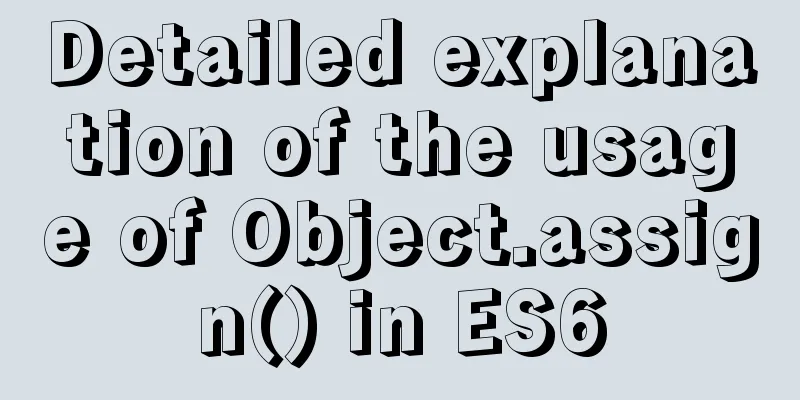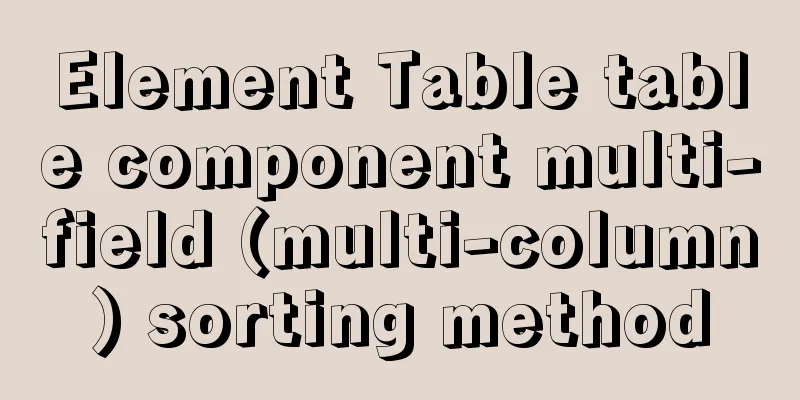Detailed explanation of the usage of Object.assign() in ES6

|
Method : Object.assign() The Object.assign method performs a shallow copy, not a deep copy. That is to say, if the value of a property of the source object is an object, then the target object copies a reference to this object.
var object1 = { a: { b: 1 } };
ar object2 = Object.assign({}, object1);
object1.ab = 2;
console.log(object2.ab);2. Purpose2.1 Adding properties to objects2.2 Adding methods to objects2.3 Cloning Objects
function copyFnc(origin) {
return Object.assign({}, origin)}
var sur = { a: 1, b: 2 };
console.log(copyFnc(sur));The above code copies the original object to an empty object, and we get a clone of the original object. However, using this method to clone can only clone the values of the original object itself, not the values it inherits. If you want to keep the inheritance chain, you can use the following code.
function clone(origin) {
let originProto = Object.getPrototypeOf(origin);
return Object.assign(Object.create(originProto), origin);
}In JS, the subclass uses Object.getPrototypeOf to call the parent class method to obtain the prototype of the object. 2.4 Merging multiple objects//Merge multiple objects into one object const merge = (target, ...sources) => Object.assign(target, ...sources); //Merge multiple objects into a new object
const merge = (...sources) => Object.assign({}, ...sources);2.5 Specifying default values for properties
const DEFAULTS = {
logLevel: 0,
outputFormat: 'html'};
function processContent(options) {let options = Object.assign({}, DEFAULTS, options);
}This is the end of this article about the usage and purpose of ES6 Object.assign(). For more information about the usage of ES6 Object.assign(), please search 123WORDPRESS.COM's previous articles or continue to browse the following related articles. I hope you will support 123WORDPRESS.COM in the future! You may also be interested in:
|
<<: Example code for implementing anti-shake in Vue
>>: JS removeAttribute() method to delete an attribute of an element
Recommend
Detailed explanation of the practical application of regular expressions in JavaScript
In actual work, JavaScript regular expressions ar...
WEB standard web page structure
Whether it is the background image or the text siz...
Detailed explanation of docker nginx container startup and mounting to local
First, the structure inside the nginx container: ...
Several ways to clear arrays in Vue (summary)
Table of contents 1. Introduction 2. Several ways...
Detailed tutorial on how to modify the root password after forgetting it in MySQL 5.7
Preface For a long time, the application and lear...
VUE+SpringBoot implements paging function
This article mainly introduces how to implement a...
In-depth understanding of MySQL master-slave replication thread state transition
Preface The basic principle of MySQL master-slave...
How to elegantly back up MySQL account information
Preface: I recently encountered the problem of in...
MySQL efficient query left join and group by (plus index)
mysql efficient query MySQL sacrifices group by t...
MySQL learning database search statement DQL Xiaobai chapter
Table of contents 1. Simple retrieval of data 2. ...
HTML+VUE paging to achieve cool IoT large screen function
Effect demo.html <html> <head> <me...
A quick solution to the error #1929 Incorrect datetime value: '''' for column ''createtime'' when using MySQL 5.x or above
After I installed MySQL, when I tried to save and...
MySQL 8.0.21.0 Community Edition Installation Tutorial (Detailed Illustrations)
1. Download MySQL Log in to the MySQL official we...
Pycharm2017 realizes the connection between python3.6 and mysql
This article shares with you how to connect pytho...
After restarting the Baota panel, it prompts -ModuleNotFoundError: No module named 'geventwebsocket'
background: Because the server deployed the flask...









